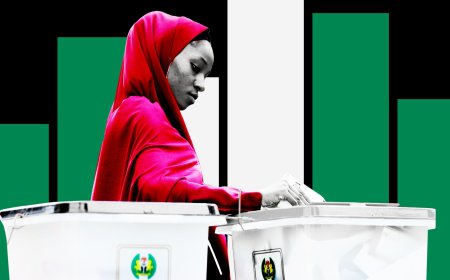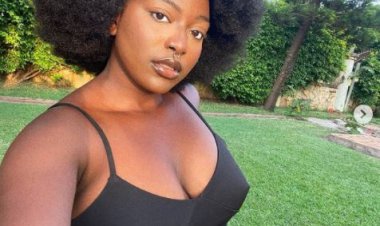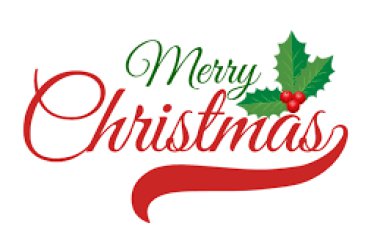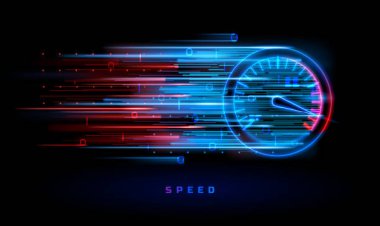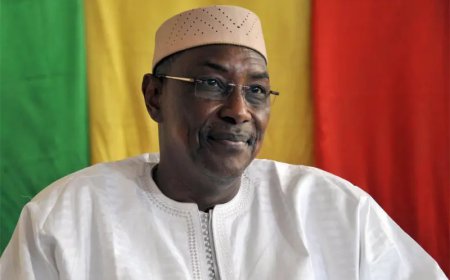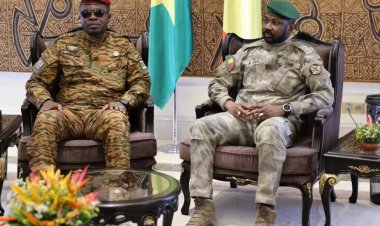Striving for More or Thriving with Less: Navigating Climate Change Challenges in Africa with a Spotlight on South Africa

Introduction
While Africa collectively contributes a modest amount of approximately 1.45 billion metric tons (3–4%) to the world's total gas emissions, within this continent lies a tale of urgency and gravity, centered around South Africa. South Africa, as an individual nation, ranks as the 15th largest greenhouse gas emitter globally with a carbon footprint of 435.9 million metric tons and has one of the highest per capita emissions in Africa, which underscores the notable environmental impact on a per-person basis. Picture this: Out of the 59 million people in the population, every individual carries the weight of about 7 metric tonnes of carbon emissions. It's not just about global rankings and numbers; it's a tale of environmental consequences etched into the lives of its people.
Does South Africa and Africa as a whole lean towards striving for more and actively seeking financial support to fortify its climate strategies? Or should the path forward involve a delicate ballet between progress and sustainability—a case of thriving with less? The soaring emissions in South Africa prompt a crucial question: What fuels this upward trajectory? Several factors contribute to South Africa's skyrocketing emissions. One significant player is the nation's heavy reliance on coal for energy production. With abundant coal reserves, it has historically been a primary source of power. The intricate dance between industrial growth and energy demand has amplified emissions, creating a formidable challenge for sustainable practices.
Eskom's Role in South Africa's Carbon Story: A Double-Edged Sword

In South Africa, coal-fired power stations account for approximately 42,000 megawatts (85%) of the country's electricity generation, which can support about 27 million homes on average. The state agency responsible for power generation is Eskom. Eskom produces roughly 50,000 megawatts (90%) of South Africa's electrical power, which is over a quarter of Africa's total power generation. In 2019, a study confirmed that Eskom releases about 1.6 million tons of sulfur dioxide into the air. It is also the largest emitter of sulfur dioxide in the power industry worldwide and contributes to nearly half of South Africa's total emissions. The implications of such substantial sulfur dioxide emissions are manifold. Sulfur dioxide is a major contributor to air pollution and poses serious risks to human health and the environment.
Which can lead to respiratory issues, exacerbate cardiovascular conditions, and contribute to the formation of acid rain, which can have far-reaching ecological consequences. Eskom significantly contributes to supplying electricity to neighboring African countries, including Botswana, Lesotho, Mozambique, Namibia, and Zimbabwe. South Africa maintains a notably high electrification rate compared to other African nations, with approximately 66 percent of rural areas and around 93 percent of urban areas having access to electricity. While coal offers affordability and abundance, the environmental trade-off looms large, putting South Africa in a dilemma of immediate necessity for energy security, economic considerations, and the pressing need to adopt cleaner, more sustainable energy alternatives. Navigating this dilemma requires a comprehensive strategy that addresses both short-term energy demands and the long-term imperative of environmental sustainability. The choices made in this intricate balance will not only shape the energy landscape but also determine the country's contribution to global efforts to combat climate change.
Navigating Employment Concerns in South Africa's Transition from Coal

At the 2021 United Nations Climate Change Conference, an agreement unfolded, promising financial support from developed countries to facilitate South Africa's shift from coal power to renewable energy. This landmark deal, while a significant stride toward environmental sustainability, is not without its complexities. The transition poses a potential threat to employment in the mining sector, which is a crucial source of livelihood for many South Africans. In 2022, the World Bank, through the Eskom Just Energy Transition Project (EJETP), approved an amount of $487 million as requested by the South African government. The purpose of the loan facility stems from South Africa's pressing need for a transformative overhaul of its power generation infrastructure. The existing system, which was aging and heavily powered by coal, has become a bottleneck, unable to meet the burgeoning demand for electricity.
The estimated power supply gap of 4–6 gigawatts (approximately 4000–6000 megawatts) has plunged the nation into a critical situation, marked by frequent and prolonged load shedding of up to 10 hours daily. This dire energy deficit not only disrupts people's day-to-day lives but also casts a shadow over the country's economic prospects. Hence, the loan facility seeks to inject much-needed financial support into the rejuvenation of South Africa's power sector, aiming to address these challenges and pave the way for a more resilient and sustainable energy landscape.
The employment landscape, particularly in the mining sector, stands at the forefront of these complexities. It has been a cornerstone of employment in South Africa, providing livelihoods for a significant segment of the population, estimated at around 500,000 people. As the country steers toward renewable energy, the potential threat to jobs in the mining sector becomes a poignant issue.
Towards a Resilient and Sustainable Energy Landscape: Striking a Delicate Balance and Sustaining a Steady Dance
During COP 17, the South African Renewable Initiative (SARi) was inaugurated with the aim of augmenting the share of electricity generated in South Africa through renewable resources. Given the political sensitivity surrounding further increases in electricity prices, SARi strategically incorporates the establishment of funding mechanisms for renewable investments. The objective is to secure financial support for renewable projects without imposing what is deemed an "unacceptable burden" on the nation's economy. This initiative reflects a commitment to balancing environmental sustainability with economic considerations in the pursuit of a cleaner energy future for South Africa.
To achieve its 2030 goals, South Africa is anticipated to necessitate an estimated $35.6 billion. The South African government is actively pursuing this financial target by leveraging $11.3 billion in low-cost financing extended by international development finance institutions (DFIs). This initial infusion of funds is anticipated to instill confidence within the commercial sector, encourage further investment, and pave the way for the remaining $24.3 billion required to meet its ambitious objectives. This strategic financial approach underscores South Africa's collaborative efforts, engaging both international and domestic stakeholders to propel its sustainable development initiatives.
Learning from Africa: Renewable Energy Success Stories
Morocco
Morocco's successful establishment of the Noor Ouarzazate Solar Complex, recognized as the world's largest solar power plant, has not only positioned the country as a trailblazer in renewable energy but has also laid down a significant blueprint for other African nations, South Africa included, to emulate. With an impressive capacity of around 580 MW, capable of powering approximately 377,000 households, the Noor Ouarzazate Solar Complex stands as a testament to the potential of large-scale solar initiatives. Beyond its sheer magnitude, the plant contributes significantly to environmental preservation by preventing the emission of about 522,000 metric tons of CO2 each year. This substantial environmental impact underscores the crucial role that innovative solar projects can play in mitigating the effects of climate change, serving as an inspiring model for South Africa as it charts its course toward sustainable and impactful renewable energy solutions.

Kenya
Kenya, presently ranking among the world's top ten users of geothermal power, is actively solidifying its position by surpassing other nations in geothermal power capacity under construction. As part of its ambitious green energy objectives, Kenya aims to nearly double its total geothermal power output by 2030. This strategic initiative aligns with the country's commitment to sustainable energy practices and positions Kenya as a global leader in harnessing geothermal resources for a greener and more energy-efficient future. Kenya's emphasis on geothermal energy is a strategic move, considering the abundance of geothermal resources in the East African Rift System. Geothermal power is a reliable and consistent source of renewable energy that can contribute significantly to the country's energy security and reduce its dependence on non-renewable resources.
Ethiopia
In this conclusive example, Ethiopia stands as a testament to the transformative power of hydropower in shaping its energy narrative. The nation has harnessed the immense potential of its abundant rivers, with a focus on the monumental Grand Ethiopian Renaissance Dam (GERD). As one of the largest infrastructure projects across the African continent, the GERD exemplifies Ethiopia's unwavering commitment to expanding its hydroelectric capacity. Nestled along the Blue Nile River, this flagship initiative boasts a planned capacity surpassing 6,000 megawatts, positioning itself as a major powerhouse in Ethiopia's energy generation landscape. Beyond addressing domestic electricity needs, the GERD holds the promise of becoming a pivotal player in regional energy cooperation, presenting opportunities for power exports to neighboring countries. In this conclusive illustration, Ethiopia's embrace of hydropower emerges not just as a national achievement but as a beacon of sustainable energy and collaborative progress on the African stage.
The Power of Sentinel-5P for Early Detection and Highlighting Hot Spots
Sentinel-5P, a satellite mission under the European Space Agency's Copernicus Programme, plays a pivotal role in early detection and the identification of environmental hotspots. Equipped with an advanced spectrometer, Sentinel-5P monitors the Earth's atmosphere with unprecedented precision, capturing data related to various atmospheric pollutants and greenhouse gases. One of the primary strengths of Sentinel-5P is its ability to provide real-time and high-resolution information.
This is particularly crucial for early detection, enabling scientists and environmental agencies to swiftly identify areas experiencing heightened concentrations of pollutants. These environmental "hot spots" may indicate issues such as industrial emissions, wildfires, or other sources of air pollution that demand prompt attention.
The data generated by Sentinel-5P not only aids in pinpointing areas with environmental challenges but also contributes to long-term monitoring and trend analysis. By tracking changes over time, it helps policymakers formulate informed strategies and assess the effectiveness of environmental policies.
Final Thoughts: Should South African Strive for More Funds or Thrive with less?
In contemplating South Africa's path forward in addressing its pressing challenges, the question arises: should the nation strive for more funds or thrive with less? This conundrum reflects a complex problem where South Africa needs to balance its desire for economic growth with its responsibility to protect the environment.
On one side, trying to get more funds shows a proactive effort to get money, which could open up possibilities for plans to tackle climate issues, start renewable energy projects, and support sustainable development. Looking for help from outside, particularly through affordable financing from international development finance institutions, might strengthen South Africa's ability to achieve its ambitious objectives. This approach is not merely about acquiring financial resources; it signifies a strategic intent to unlock opportunities and avenues for the comprehensive implementation of climate strategies.
On the other hand, the call to thrive with less advocates for a balanced and sustainable approach, acknowledging the harmony needed between economic growth and environmental preservation. This path encourages maximizing the efficiency of existing resources, embracing innovative solutions, and fostering a resilient economy that minimizes its ecological footprint.
The path to a sustainable future for South Africa lies in skillfully navigating the balance between striving for more and thriving with less. South Africa will need approximately $130 billion to seamlessly transition into a low-carbon power landscape before 2050.
Here's where a compelling proposition comes into play. Instead of relying on a massive influx of funds within a tight timeframe, picture a scenario where South Africa strategically secures smaller but consistent financial commitments. By extending the transition period from 2030 to 2050, a gradual and phased approach to renewable energy becomes not only feasible but remarkably advantageous.
This approach isn't about compromising on ambitions; it's about making a wise and sustainable choice. By incrementally securing smaller amounts of funding, South Africa can steadily and confidently make the shift towards renewable energy without inflicting undue stress on its economy and its people. This extended timeline not only allows for a smoother transition but also mitigates the risk of power outages, ensuring a reliable and resilient energy landscape for all.
References
- Statistica - Highest C02 emitters in the world (2022)
- Worldometers - CO2 emissions per capita
- Aljazeera - How Much Does Africa Contribute to Global Carbon Emissions
- Trade Gov - South Africa Energy.
- World Bank Projects - Eskom Just Energy Transition Project
What's Your Reaction?









